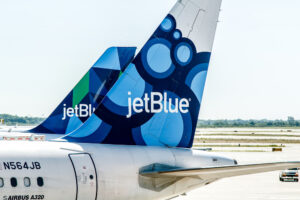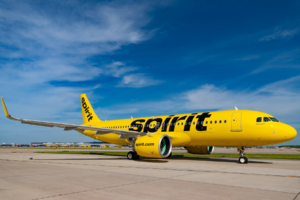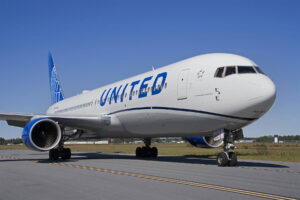Guess Who’s Back? The Dramatic Story of WOW’s Rise and Fall (and Rise)

WOW is said to have started with a boom—a volcanic eruption, to be exact.
The eruption of the Eyjafjallajökull volcano in 2010 created an unexpected opportunity for WOW airlines. In short, this event put the small, Scandinavian island of Iceland on the map, and a falling Icelandic krona meant Iceland suddenly became an attractive country to international tourists.
In 2012, tourist numbers to Iceland boomed, with a 19% increase in international visitor numbers compared to the year previous. WOW, which was founded in 2011 and began operations in 2012, was there to deliver the ever-increasing deluge of passengers wanting a slice of the Northern Lights.
Created from the ashes (and assets) of the failed IcelandExpress, the first few years of WOW’s operations drew masses of customers. By 2017, it carried 2.8 million customers annually, four times what it carried in 2015. Staff numbers ballooned to over a thousand. Focused on key European tourist markets and eventually expanding services to the United States, WOW built to a fleet of 11 Airbus A320s before adding A330s to its fleet mix.
Let’s Get Transatlantic
The business model used by WOW was ambitious, particularly when it came to challenging legacy carriers. To compete with the likes of Icelandair and major American carriers, it upgraded its fleet to include widebodies, at massive expense. Its CEO, Skuli Mogensen, later admitted the decision to order wide-body aircraft was a ‘fatal mistake’, and even getting rid of these aircraft and attempting to restructure the airline couldn’t save it from its financial woes.
Transatlantic legacy carriers work on a cross-subsidization model, something that low-cost-carriers cannot. Those ten or so full-fare paying passengers sitting in business or first class historically tend to contribute a lot more to the airlines’ bottom line than the 200 or so economy passengers down the back.
Conde Nast claims that over its years of operations, Wow Air offered roundtrip, direct tickets to Iceland from cities like St. Louis, Cincinnati, and Cleveland for as little as $100USD. Those are some pretty tight margins, and with no full-fare paying first or business class passengers to help bulk up profits, it’s little wonder that the airline was struggling with its cost structure and revenue.
An Ambitious Bucket List of Destinations
In 2015, Mogensen stated “…the conventional wisdom is that low-cost, long-haul doesn’t work. We think it has never been applied properly. And we think the timing is now perfect.” Despite his optimism, though, it seems that WOW also failed to crack the elusive formula.
With a large number of destinations compared to the size of an airline fleet of only 10 or 11 planes, engineering efficiencies were an issue. The moment something went wrong with an aircraft or crew, the flow-on effect was horrific – leading to delays and frustrated passengers. Although WOW generally had a good reputation with flyers, repeated delays tested the patience of the most understanding of travelers.
At its peak, though, WOW Air carried more than 30% of people traveling into or through Iceland – a massive percentage, any way you look it at. However, it took a bit of a scattergun approach to bring these people to Iceland, at an extremely high cost. The fact that it had several different airframe types in its fleet certainly didn’t help its engineering costs, one of the key considerations for any low-cost carrier.
To Hedge or Not to Hedge
WOW Air blamed fuel prices, in part, for a $33.7 million loss in the first three quarters of 2018. As an airline, WOW opted to not hedge oil options, resulting in massive cost increases. As early as 2018, critics were questioning whether the airline would be able to withstand fuel pricing volatility and noting the large financial black hole that it seemed to be cruising into.
WOW was the eighth European airline to have gone belly up since 2018. When you consider that several Budget airlines struggle to balance low fares alongside fluctuating – and usually increasing – fuel costs and competitive fare battles with other airlines, it’s sometimes surprising that we continue to see airline startups being launched at all.
A Lack of Equity
What’s not surprising, though, was that the banks of Iceland were a little hesitant to invest post the 2008-financial crisis. As an airline, WOW lacked equity, and the banks and Government of Iceland were unwilling to step in to help. This was despite Iceland’s growing reputation as a tourist attraction. Although WOW harbored an incredible amount of brand recognition and reasonable goodwill, its financial situation continued to worsen as it spread itself thinly across its network and operations, with a high fixed cost structure.
As the Reyjavik Grapevine pointed out, there were some interesting parallels between WOW’s demise and the earlier banking crisis in Iceland. In 2008, bankers with limited experience managed to inadvertently bring down the Icelandic banking system. A lack of relevant experience was also a problem WOW, which was started by a former IT executive, supported by a team that simply didn’t know the intricacies of running an airline.
In a social-media saturated world, WOW was flashy, trendy and popular – but behind the scenes, it lacked the ever-important cash needed to keep it flying. Even the hefty ancillary charges of the airline weren’t enough to help the bottom line. Low-cost travelers were used to bringing their own food, packing light, and avoided changing their travel at all costs. WOW was able to eke very little additional revenue out of them.
The Repercussions of Wow’s Departure Are Wide
WOWs demise led to the loss of over 1,100 jobs in Iceland. In a country as small as Iceland, it’s not just the flight attendants, pilots, engineering staff and airline operational staff that are out of work. With fewer people visiting Iceland’s major international airport (Keflavík), even duty-free shop staff lost their jobs. A music festival—Sónar Reykjavík—was canceled earlier in 2019, because many artists and attendees were booked on WOW flights.
Tourism numbers have the potential to drop significantly following the failure of WOW. The number of scheduled flights to and from Iceland are down 27% to the end of 2019, due to a combination of canceled 737MAX Icelandair flights and WOW flights no longer being offered.
For a small country, infrastructure straining under the influx of low-cost tourists that traveled to Iceland via WOW, this might be a blessing in disguise. However, an estimated decrease of 0.4% of Icelandic tourism activity could spell disaster for the thousands of Icelandic people working in the burgeoning tourism industry.
A New Beginning for WOW?
It seems those Icelandic are a hardy bunch. In July 2019, it was announced that a consortium consisting of former WOW directors and an Irish investment firm were planning to launch a replacement airline, named – aptly – We Are Back.
However, in September 2019, it was announced that American arms dealer Michele Ballarin’s company had acquired WOW, and it will be relaunching in just a few short months. Planning to fly between Iceland and Washington, it will be run initially under a US Air Operators Certificate and will start operations with just two planes.
In a garbled press conference, Michele Ballarin stated that she aimed to ‘Make Flying Fun Again’ by bringing ‘nutrition’ on board, creating lounges for all to use, and using a mixture of Boeing and Airbus planes – potentially, one of each in the proposed two plane fleet. The beautiful WOW flight attendants even got a shout out.
In terms of airline resurrections, WOW could certainly be an interesting one. I’ll be watching this space.























1) Until they actually fly a revenue flight, they're not back, and 2) IF they fly a revenue flight, there likely won't be a long time separation from their first and last flights. This is going to be even more hilarious to watch than the first iteration of WoW. Instead of writing about new financially unstable carriers in the markets, you would do the public a huge favor by writing about some of the horror stories of those passengers who have gotten screwed by these unstable upstarts.
A huckster with no airline or commercial transportation experience is restarting WOW repeating several of the mistakes that doomed it the first time around but hopes that citing trendy buzzwords like "nutrition" and "biometrics" (for what, exactly?) will help. This flying trainwreck will be fun to watch... if it ever even gets off the ground.
The only thing missing from this report is a panel from the late cartoonist Jim Unger's "Herman" . . .
I flew Wow about abyear ago from BOS to ARL, and it was the most terrible experience of my life. Not because it was low cost, I knew that there would be no food, no water, no entertainment, et cetera... But the way they treat passengers was insane. They do not communciate with passengers and their ground crews will actively argue with you. My floght lwaving Boston ended up about 4 hours late, and they didn't make any announcements, and when I called their customer service line, they told me I missed the floght and had no idea it was delayed. Then they stranded me in Iceland for 2 days without food vouchers, and forgot to send a driver to pick us up to catch our next flight. Then after 6 months of fighting with them to get our fees that they owe us under EU law, they went bankrupt, leavijg my whole flight high and dry.